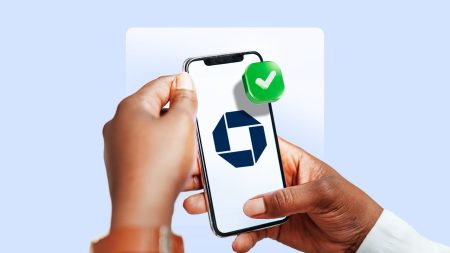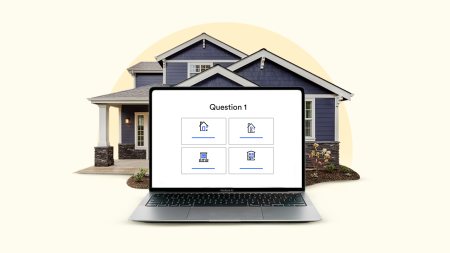Key takeaways
- Business loans require significant documentation about your business formation, financial statements and possibly a business plan
- Both personal and business finances are reviewed
- Lenders typically take a few days to weeks to process your information, depending on the lender and type of loan
Every business loan requires you to submit a long list of documents to prove your business can handle the debt. These frequently include your personal financial information alongside your business’s revenue, income and tax information.
Findings from the 2024 Small Business Credit Survey by the Federal Reserve Banks show that 59 percent of firms applied for financing, but only 51 percent of those businesses were fully approved for funding.
To increase your chances of being fully or partially approved for funding, you will need to provide accurate business loan documents and meet lender requirements when you apply.
Documents required for a business loan
You’ll generally find that traditional banks and credit unions require the most documentation. But even online lenders like Fundible, Credibly and Fundbox have documentation requirements that you must meet to get approved for funding.
You’ll also need to specify the loan’s purpose, how much you need to borrow and how you’ll repay it. Here’s a list of documents needed for a business loan:
Personal and financial information
Lenders want to confirm your identity and learn more about your financial health. How you handle your personal finances can show lenders how well you might manage finances for your business.
- Name
- Address
- Phone number
- Date of birth
- Social Security number
- Up to one year of personal bank statements
Small business lenders typically weigh your personal finances alongside your business finances. The lender will use your personal information to get a copy of your credit reports and scores. These factors affect your approval odds and the loan interest rate you receive.
If you’re requesting funding for a new venture, you may also be asked to provide a resume that reflects industry experience.
Business licenses and registration
Gather any business formation and licensure documents you received from the federal, state or local government when starting your business. These documents prove that you’re a legitimate business and include the following:
- Articles of incorporation
- Franchise agreement (if applicable)
- Business licenses and permits (if applicable)
- Employer Identification Number (EIN)
- Operating agreement (if your business is an LLC)
Bankrate insight
Legal documents
The lender may want a copy of the commercial lease agreement if your company operates outside your home. You should also have any contracts between your company and third parties handy if the lender requests them.
Financial documents
Lenders want to know if your company’s income is sufficient for timely monthly loan payments. They will also confirm if your company is in good financial health and can afford to take on more debt by examining these financial documents:
- Up to one year of business bank account statements
- Personal and business tax returns from the most recent three years
- Most recent and projected balance sheets: These describe the business’s current assets and liabilities, giving a snapshot of the business’s overall finances.
- Income statement, which shows all income and expenses over a specific period of time for the purpose of seeing if the business is operating at a profit.
- Cash flow statement, which shows all income and expenses and breaks down expenses into operating, investing and financing activities.
- List of current accounts receivable to show all sources of revenue for the business.
- Schedule of business debts to show all the business’s current debt obligations, including commercial real estate and other business loans.
- Valuation of collateral if you’re applying for a secured loan requiring collateral, the lender will likely request a document that includes the collateral’s market value. You can have the property professionally appraised if you don’t have this information in written form.
Bank statements can generally be retrieved from your online banking dashboard or by visiting a local branch. Ask your accountant for copies of your financial statements if you don’t have them on file.
Some lenders may also ask for your business credit report if they don’t pull it themselves. You can order a copy from Dun & Bradstreet, Experian or Equifax. It’s a good idea to understand both your personal and business credit scores ahead of time so that you know which loans you qualify for.
Business plan
It’s not uncommon for lenders to request a written business plan before making a lending decision. You can create a lean or traditional business plan, but both should communicate your strategy to grow a profitable business. You can write this business plan yourself or hire a professional business writer to draw up the document for you.
Key elements to include are your:
- Executive summary
- Company description
- Market research
- Detailed descriptions of your products or services
- Marketing strategy
- Funding request
Documents needed for SBA loan
Beyond the business loan documents already listed as requirements for a business loan, here’s what you’ll need to apply for an SBA 7(a) loan:
- SBA Form 1919 (Borrower Information Form)
- SBA Form 413 (Personal Finance Statement)
- SBA Form 912 (Statement of Personal History), if required after you fill out form 1919
- Current profit and loss statement, along with schedules from the prior three fiscal years
- Balance sheets for the last three years
- One year of projected financial statements and a detailed explanation of how your business will meet these projections
- List of affiliates and subsidiaries and their names and addresses
- Written document detailing your company’s history, challenges and why you’re requesting funding
- List of business loans you’ve applied for
- Proof of equity, if you’re purchasing an existing business
If you’re seeking another type of SBA loan, you’ll likely need to submit the above same documentation. Consult the SBA-approved lender you’re considering to learn more about what you’ll need to prepare the application package.
How to submit your application
Once you’ve gathered your business loan documents, the final step is formally applying with your chosen lender. Many lenders allow you to apply online and upload the required documents, though some like traditional banks and credit unions may require an in-person visit and physical copies.
The lender will review your application and contact you with any questions or additional documentation requests they may have.
You’ll receive a lending decision once the lender reviews your application and supporting documents. It could take a few days or weeks to hear back from the lender. If you apply for an SBA loan, the decision timeline may be longer, up to 90 days.
Lender’s evaluation criteria
When evaluating your business loan application, lenders consider more than simply the paperwork you’ve submitted. They also use what’s known as the 5 C’s of credit, an unofficial criteria used to consider a business loan application. The 5 Cs that make up this formula include character, capacity, capital, collateral and conditions.
Character is a measure of your business’ credit history as well as its reputation. Capacity relates to your business’ perceived ability to pay back the loan. This is typically based on your company’s cash flow and financial performance. Capital is an assessment of the money you have invested in your business personally. The final two Cs are collateral, which refers to the assets you’re using to secure the loan, and conditions, which relate to the purpose of the loan along with the broader economic environment.
Improving loan approval odds
There are many steps you can take in advance of submitting your loan application to help increase your odds of approval. Some of the steps to consider include:
- Improve your credit score: Lenders will consider both your business credit score and your personal credit score. Before applying for a loan, review your scores and work on any areas that need improvement, such as paying down debt or disputing any errors you find in the report. It’s also important to maintain a consistent track record of paying bills on time.
- Establish a business plan: Taking the time to create a business plan that shows your goals and financial forecast, along with business strategies, makes it clear for lenders how you plan to manage your business, earn income and repay the loan. Preparing this type of document is a valuable step that can increase your odds of approval.
- Develop a relationship with a lender: Opting to work with a local bank or credit union, where it’s possible to build a relationship with the loan officer, is another step that can work to your advantage. Establishing a relationship with a bank where you’re seeking funds can increase your chances of approval.
- Apply for a smaller loan: Requesting a smaller loan amount may make it easier for the lender to approve the loan, as it will be less risk for them. Additionally, you can use a smaller loan to establish a successful track record of repayment and managing debt responsibly, which can help increase your odds of approval in the future for a larger loan.
Business loan proposal requirements
A business loan proposal is a document that makes your case to a lender in terms of why you think your business is a reliable investment and deserving of the loan you’re seeking. A good business loan proposal will also outline how you plan to repay the loan. While the exact format of a business loan proposal can vary, it should include details about your business along with financial documentation.
In general, a business loan proposal would include an executive summary, which is an overview that introduces your business, its history and your loan request. The proposal might also include sections addressing and explaining your business model, as well as a section that details any investment in the business made by the owners.
Business loan proposals also typically feature a section dedicated to explaining your loan request in more detail, such as addressing how you will use the money, what you might buy with the funding if you plan to make a purchase, and how the injection of cash will help your business overall. Additional areas of a business proposal might detail your loan repayment plan and your income projections.
The bottom line
When applying for a business loan, each lender has its own list of documents that it requires you to send them. You’ll need to provide personal and financial documents to be considered for a loan.
Before applying, gather the documents required for a business loan to help streamline the application process. It’s also best to contact the lender to confirm the documents needed to process your application. And if the lender requests additional information during their review, provide it promptly to get a loan decision sooner.
Frequently asked questions
Top lenders for small business loans
There are many different lenders to sort through when you’re considering a business loan. Some of the top options to consider include the Action Opportunity Fund, which provides tailored small business funding, along with some of the most well known banks in the country such as Bank of America and Chase. Bank of America offers a variety of small business funding options including term loans and credit lines. Similarly, Chase offers small business loan products. Online lenders are also an option, such as Fora, which is known for offering especially fast funding.
Collateral requirements for loans
In some cases, you may be required to provide collateral in order to secure a loan. This helps to reduce a lender’s risk when providing you a loan. Common types of collateral include real estate or business assets and inventory. Business equipment is another form of collateral. If you intend to use collateral to help secure a loan, it’s a good idea to identify what you are willing to use for this purpose and its current value.
-
Banks typically require more information than an alternative or online lender, and the list can vary from lender to lender. You will likely need your balance sheet, income and cash flow statements, financial projections and a business plan to apply for a bank loan. You will also need to provide some personal information like your Social Security Number as well as your articles of formation and Employer Identification Number.
-
When applying for a business loan, you will likely need your business formation documents, EIN, personal and business bank statements and tax returns. You will also need your business’s cash flow and income statements, a balance sheet and profit-and-loss statements to give the lender a picture of your business’s financial health.
-
You’ll need the same documentation with the lender whether you’re applying for a business loan for the first time or not. Some lenders that work with startups are more lenient with their documentation requirements, such as only requiring business bank statements. Be prepared to show proof of your business finances through your balance sheets, income and cash flow statements, bank statements and tax returns.
Why we ask for feedback
Your feedback helps us improve our content and services. It takes less than a minute to
complete.
Your responses are anonymous and will only be used for improving our website.
Help us improve our content
Read the full article here









